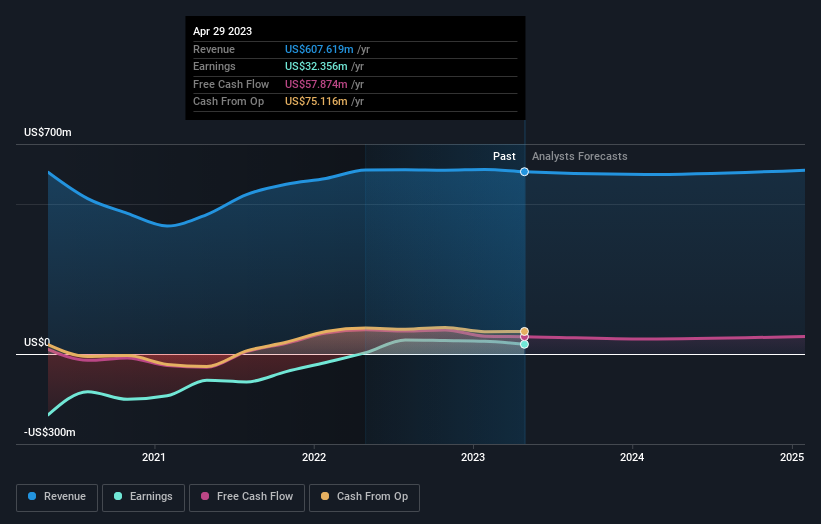What Does J.Jill, Inc.'s (NYSE:JILL) Share Price Indicate?
J.Jill, Inc. (NYSE:JILL), might not be a large cap stock, but it saw a significant share price rise of over 20% in the past couple of months on the NYSE. As a small cap stock, hardly covered by any analysts, there is generally more of an opportunity for mispricing as there is less activity to push the stock closer to fair value. Is there still an opportunity here to buy? Let’s examine J.Jill’s valuation and outlook in more detail to determine if there’s still a bargain opportunity.
See our latest analysis for J.Jill
What Is J.Jill Worth?
The share price seems sensible at the moment according to my price multiple model, where I compare the company's price-to-earnings ratio to the industry average. I’ve used the price-to-earnings ratio in this instance because there’s not enough visibility to forecast its cash flows. The stock’s ratio of 7.55x is currently trading slightly below its industry peers’ ratio of 10.93x, which means if you buy J.Jill today, you’d be paying a reasonable price for it. And if you believe that J.Jill should be trading at this level in the long run, then there’s not much of an upside to gain over and above other industry peers. Although, there may be an opportunity to buy in the future. This is because J.Jill’s beta (a measure of share price volatility) is high, meaning its price movements will be exaggerated relative to the rest of the market. If the market is bearish, the company’s shares will likely fall by more than the rest of the market, providing a prime buying opportunity.
What does the future of J.Jill look like?
Future outlook is an important aspect when you’re looking at buying a stock, especially if you are an investor looking for growth in your portfolio. Although value investors would argue that it’s the intrinsic value relative to the price that matter the most, a more compelling investment thesis would be high growth potential at a cheap price. Though in the case of J.Jill, it is expected to deliver a negative revenue growth of -1.0% next year, which doesn’t help build up its investment thesis. It appears that risk of future uncertainty is high, at least in the near term.
What This Means For You
Are you a shareholder? JILL seems priced close to industry peers right now, but given the uncertainty from negative returns in the future, this could be the right time to reduce the risk in your portfolio. Is your current exposure to the stock beneficial for your total portfolio? And is the opportunity cost of holding a negative-outlook stock too high? Before you make a decision on JILL, take a look at whether its fundamentals have changed.
Are you a potential investor? If you’ve been keeping tabs on JILL for a while, now may not be the most optimal time to buy, given it is trading around industry price multiples. This means there’s less benefit from mispricing. In addition to this, the negative growth outlook increases the risk of holding the stock. However, there are also other important factors we haven’t considered today, which can help gel your views on JILL should the price fluctuate below the industry PE ratio.
If you'd like to know more about J.Jill as a business, it's important to be aware of any risks it's facing. Every company has risks, and we've spotted 4 warning signs for J.Jill you should know about.
If you are no longer interested in J.Jill, you can use our free platform to see our list of over 50 other stocks with a high growth potential.
Have feedback on this article? Concerned about the content? Get in touch with us directly. Alternatively, email editorial-team (at) simplywallst.com.
This article by Simply Wall St is general in nature. We provide commentary based on historical data and analyst forecasts only using an unbiased methodology and our articles are not intended to be financial advice. It does not constitute a recommendation to buy or sell any stock, and does not take account of your objectives, or your financial situation. We aim to bring you long-term focused analysis driven by fundamental data. Note that our analysis may not factor in the latest price-sensitive company announcements or qualitative material. Simply Wall St has no position in any stocks mentioned.

